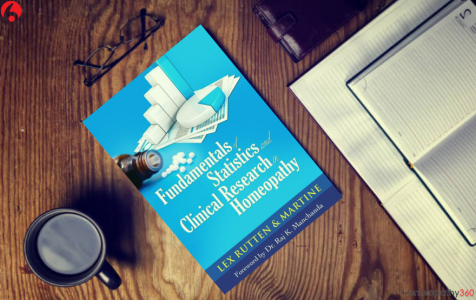 Book: Fundamentals of Statistics and Clinical Research in Homoeopathy
Book: Fundamentals of Statistics and Clinical Research in Homoeopathy
Author: Dr Lex Rutten & Dr Martine
Foreword by: Dr Raj K. Manchanda
Published by: B. Jain Publishers (P) Ltd., New Delhi
ISBN: 9788131937921
Reviewed by: Dr Yashika Arora
There is very less number of books which explain how statistics are involved in many medical decisions and how to assess practice experience, like the relationship between symptoms and beneficial effects of homeopathic medicines. This book on Fundamentals of Statistics and clinical research is one of them. This book is a compendium of years of arduous work. The terminology used in statistics has been well explained with examples and the exercises given at the end of each chapter are written in a thought-provoking style.
This book is a requisite for applying statistics to identify homoeopathic symptoms as prognostic factors from the colossal and indeterminate data we built up in two centuries. It explains the statistics in plain language and is written from a homoeopathic standpoint, thus bridging the gap between practitioner and scientist.
The book serves as a tangible base for planning randomised controlled trials and modifying and modernizing the homoeopathic repertory in future. Thus, mentioning all the guidelines required to make Homoeopathy – an evidence-based medicine, collecting the data and prove the miraculous cure of Homoeopathy with evidence. Science can and should be applied to improve homoeopathy. The book helps one to experience and choose the right homoeopathic medicine that can be expressed as a statistical algorithm.
The book aims to offer a basic guide to the most fundamental notions in statistics and methodology: why and how should you collect your own practice data. It encourages the physician to participate in the process of multi-centred data gathering. The book focuses on Bayesian statistics that enables to show that homoeopathy is based on a scientifically sound algorithm.
The book consists of 288 Pages and is an attempt to bring statistics and clinical research closer to homoeopathic doctors and students. The book is designed for Homoeopaths, especially to understand the scientific algorithm of the way, a physician selects the medicine for a particular patient, based on the diagnosis, the process is step-by-step, built on a combination of symptoms and observations. Likewise, the prognosis is based on a combination of symptoms and personal characteristics. The book is an eye-opener and shows how to interpret practical experience scientifically.
The scope and the importance of research are beautifully explained, the correlation of Master Hahnemann and Bayes’s theorem to predict the future of the case, the different types of variables and statistical methods to be used, the ethical guidelines and the prognostic factor of research, when it comes to the scientific future of Homoeopathy. With this instrument, Homoeopaths can improve their methods with their own practice experience and use all the information, patients provide. The book includes the basic necessary knowledge about clinical research, to be used in everyday practice.





